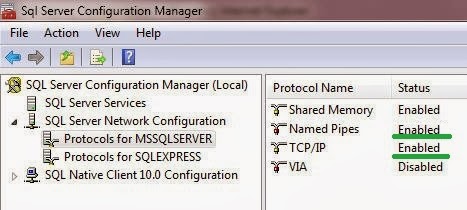There are some points to consider while implementing replication. These points include some technical and environment requirements for the replication, means in this article, I will explain about configuration setting for SQL Server replication.
Check the below points, here you will get clear idea about configuration for replication-
1. Select the proper version of SQL Server
As we know that there are different versions of SQL Server present in the market, so it must that first we have to select proper SQL Server version for replication.
Below table will make you understand to select proper version of SQL Server for Replication.
Reference from- SQL Server Versions

By seeing above table, we can easily identify suitable version of SQL Server for our requirement.
2. Name of the Server (Use actual name of server)
While implementing replication, we should use name of the server (Actual Name of the Server) not IP address, If the user logins to server using IP (without actual SQL Server Name) then the replication wizard for creating publication will not work and it will generate error like this-

So, we should use Server Name not IP Address of server.
3. Start SQL Server Agent Service
This service should be started before going for replication, to start this we can get list of services using the Control Panel and then we can start.
Follow this - Control Panel\All Control Panel Items\Administrative Tools\Services

By default, the SQL Server Agent service is disabled when SQL Server is installed unless you explicitly choose to auto start the service during installation.
4. Enable the TCP IP Ports of SQL Server Instance
TCP IP Ports of SQL Server should be enabled because data transfer is done using TCP Protocol.
To enable this just open the SQL Server Configuration manager and Check for SQL Server Network Configuration, Here we will find Protocols for SQL Server Instance. Just right click on TCP/IP protocol and enable it.
5. Enable the Named Pipes of SQL Server Instance
As we have enabled the TCP IP Ports, the same way we have to enable Named pipes using the SQL Server Configuration manager.
You can see below image, Here TCP/IP port and Names Pipes are enabled.

6. Turn off the Firewall settings
In replication web synchronization requires additional ports to be opened on the firewall because of that firewall should be turned off.
7. Sufficient Disk Space
It may be possible that numbers of Subscribers are more, so in this case we should be more careful about disk space because after synchronization all the database will be sync and this require more space. Synchronization generates high values of data so it is must that we should have sufficient disk space to save the data.
8. High Bandwidth
It is must that Bandwidth should be good because In case of large amount of data, it uses large amount of bandwidth. Database synchronization will be fast in case of high bandwidth.
9. Proper Database design
It is must that database should be designed properly to reduce possibility of conflict. It may be possible, conflict may occur but if our database design is proper then conflict can be resolved very easily.
We can consider these points while designing database structure-
(i) For Update Conflict- Each record should have one column to track update time of the record so that while resolving the conflict, we can decide that which record should be reflected (Publisher or Subscriber record). By this way update conflict can be solved very easily.
(ii) For Insert Conflict- Each record should have primary key, it should not repeat at other subscriber also because after synchronization all records will be in same place. By this way insert conflict will not occur.
Like this, we can reduce possibility of conflict.
10. Selection of replication type
It is must that we should well-known about types of replication before implementing replication because we have to select the proper type of replication based on our environment.
These are the considerations, when we go for replication. By following these points implementation of replication can be done easily.